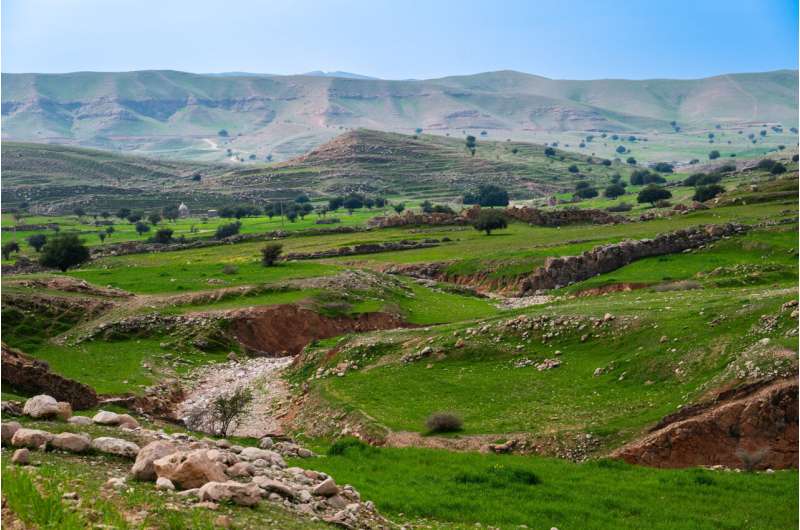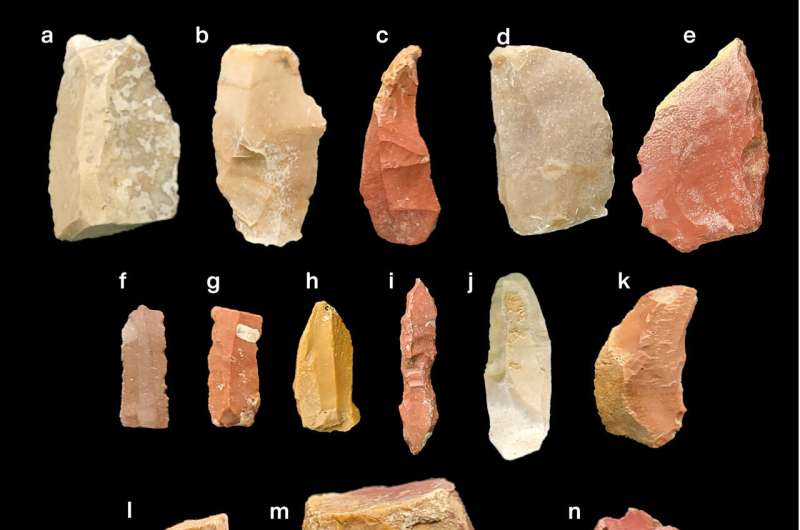This article has been reviewed according to Science X's editorial process and policies. Editors have highlighted the following attributes while ensuring the content's credibility:
fact-checked
peer-reviewed publication
trusted source
proofread
Changes in the environment influenced hominin dispersals across ancient Iran, reveals study

A world-first model of paleoclimate and hydrology in Iran has highlighted favorable routes for Neanderthals and modern human expansions eastwards into Asia.
Published in PLoS ONE, the findings reveal for the first time that multiple humid periods in ancient Iran led to the expansions of human populations, opening dispersal route across the region, and the possible interactions of species such as Neanderthals and our own Homo sapiens.
Professor Michael Petraglia, a key researcher in the study, said historic humid periods resulted in massive changes to ecosystems and led the team to identify large lakes in areas that were formerly deserts.
"Conversely, during glacial periods this increased aridity would have led to the expansion of deserts, led to contractions, and the isolation of hominin populations," said Professor Petraglia, who is the Director of Griffith's Australian Research Center for Human Evolution.
"This cycle of wetting and drying is shown for the first time in Iran."
The research team, led by Ph.D. candidate Mohammad Javad Shoaee from the Max Planck Institute for Geoanthropology in Germany, found that during Marine Isotope Stage (MIS) 5, a warm, humid period beginning roughly 130,000 years ago, lakes and rivers enabled two pathways for human groups.
One was a northern route through the Alborz and Kopet Dagh Mountains and north of the Dasht-I Kavir desert. The other route, first identified here, ran south along the Zagros Mountains before extending eastwards towards Pakistan and Afghanistan.
The researchers also found evidence for a potential northern route during MIS 3, beginning about 57,000 years ago, which, given artifacts attributed to multiple tool making groups, could have permitted interactions between modern humans and Neanderthals.

"These findings highlight the importance of Iran for our species' dispersals out of Africa and ultimately around the globe," said Professor Petraglia.
"As in other regions long considered too arid for early human occupations, such as the Arabian Peninsula, recent paleoclimatic research is changing how we understand the human story and the role that changing climates have played."
"We recognized a new southern route along the Zagros Mountains and extending eastwards towards Pakistan and Afghanistan. We found evidence for a potential northern route during MIS 3, which would have permitted hominin movements and species interactions in Southwest Asia," Shoaee said.
To find out how human groups made their way into Iran, the team developed the first spatially comprehensive, high resolution palaeohydrological model for Iran.
They then compared their model, which showed when and where water was available, to the distribution of previously documented archaeological sites.
The result was a clear relationship between the availability of water and the evidence of human presence.
Not only does the current study help to explain the presence of previously documented sites, it also serves as a guide for future archaeological surveys in the region.
"Our paleohydrological analyses identified 145,354km of rivers and 115 paleolakes calculated from 6,380 paleolake deposits. Only a handful of these paleolakes have so far been studied," Shoaee said.
By focusing on regions where water once made human occupations possible, Professor Petraglia said "researchers could maximize the potential of finding archaeological sites."
More information: Defining paleoclimatic routes and opportunities for hominin dispersals across Iran, PLoS ONE (2023). DOI: 10.1371/journal.pone.0281872
Journal information: PLoS ONE
Provided by Griffith University





















